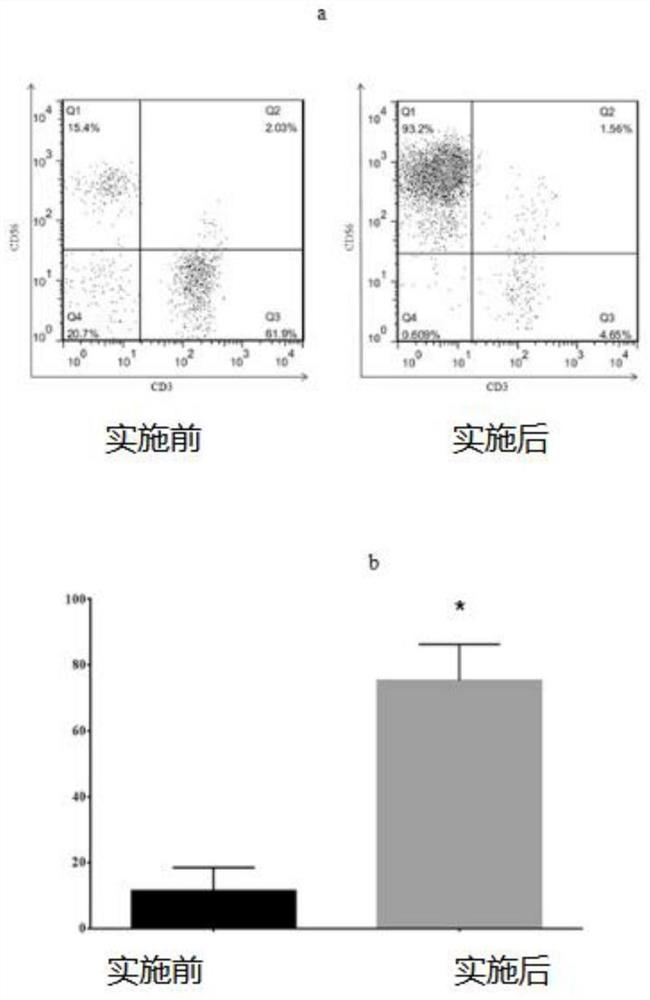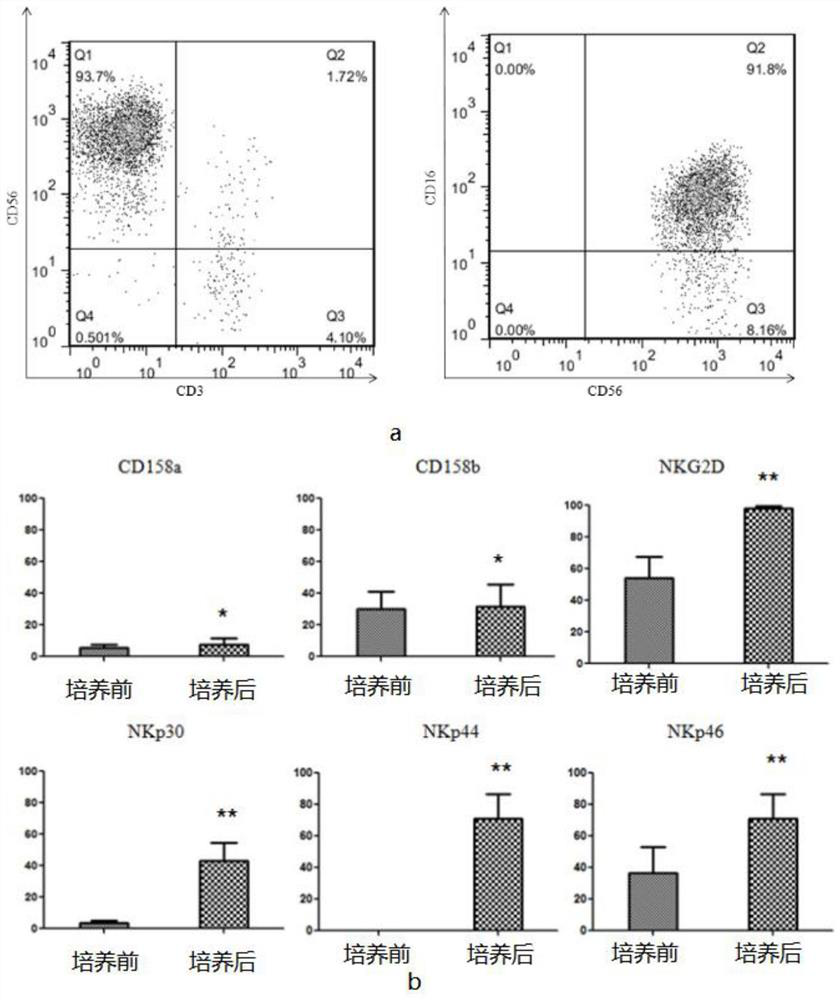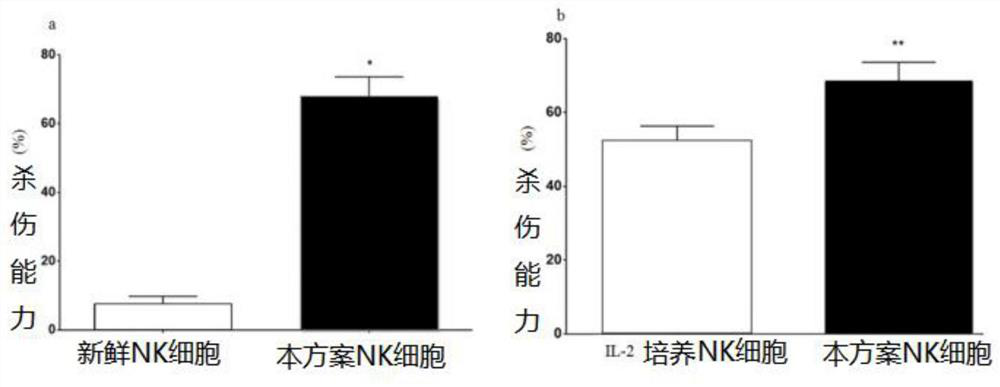Peripheral blood-based LCL-NK cell co-culture method, cell and product
A combined culture and peripheral blood technology, applied in the direction of cell culture active agents, blood/immune system cells, animal cells, etc., can solve the problems of unsatisfactory clinical effect, insufficient NK cell number and killing activity, etc.
- Summary
- Abstract
- Description
- Claims
- Application Information
AI Technical Summary
Problems solved by technology
Method used
Image
Examples
Embodiment 1
[0028] A kind of specific implementation of the scheme of the present invention comprises the following steps:
[0029] PBMC Peripheral Blood Mononuclear Cell Isolation
[0030] Take 5ml of human peripheral blood and put it in a 10ml centrifuge tube, then add the same amount of PBS and mix well. Take another 10ml centrifuge tube and add 5ml of lymphocyte separation medium. Use a dropper to slowly drop the above-mentioned mixture of peripheral blood and PBS along the tube wall onto the liquid surface of the lymphocyte separation medium, and be careful not to damage the layered liquid surface. Centrifuge horizontally at 800g for 20min. After centrifugation, the centrifuge tube was separated into 3 layers. Use an aspirator to draw the white cloud layer between the upper and middle layer interface into a new centrifuge tube, try not to bring other layers of cells. Add more than 5 times of PBS to this centrifuge tube, centrifuge at 300g for 5min, and discard the supernatant. R...
Embodiment 2
[0053] The difference between this example and Example 1 is that in the preparation of LCL cells, the method of radiation inactivation is used for radiation inactivation, and the radiation dose is 40Gy.
[0054]In this example, compared with groups A and B, the proportion of NK cells cultured by this culture method was significantly increased to about 55±5.2%, and the amplification factor of NK cells was about 1000±58 times. After culture, NK cells still expressed a high level of CD16; while the inhibitory receptors (CD158a and CD158b) on the surface of NK cells did not change significantly (P>0.05), while the activating receptors included NCRs (NKp30, NKp44 and NKp46) and NKG2D was significantly increased (P<0.05). The killing ability to K562 was significantly increased (p<0.01). Similarly, compared with the cytotoxicity of NK cells cultured with IL-2 alone, it was found that the killing ability of NK cells cultured by this experimental method to K562 was also significantly ...
Embodiment 3
[0056] The difference between this example and Example 1 is that in the preparation of LCL cells, the method of radiation inactivation is used for radiation inactivation, and the radiation dose is 50Gy.
[0057] In this example, compared with groups A and B, the proportion of NK cells cultured by this culture method was significantly increased to about 82±6.2%), and the amplification factor of NK cells was about 700±45 times. After culture, NK cells still expressed a high level of CD16; while the inhibitory receptors (CD158a and CD158b) on the surface of NK cells did not change significantly (P>0.05), while the activating receptors included NCRs (NKp30, NKp44 and NKp46) and NKG2D was significantly increased (P<0.05). The killing ability to K562 was significantly increased (p<0.01). Similarly, compared with the cytotoxicity of NK cells cultured with IL-2 alone, it was found that the killing ability of NK cells cultured by this experimental method to K562 was also significantly...
PUM
 Login to View More
Login to View More Abstract
Description
Claims
Application Information
 Login to View More
Login to View More - R&D
- Intellectual Property
- Life Sciences
- Materials
- Tech Scout
- Unparalleled Data Quality
- Higher Quality Content
- 60% Fewer Hallucinations
Browse by: Latest US Patents, China's latest patents, Technical Efficacy Thesaurus, Application Domain, Technology Topic, Popular Technical Reports.
© 2025 PatSnap. All rights reserved.Legal|Privacy policy|Modern Slavery Act Transparency Statement|Sitemap|About US| Contact US: help@patsnap.com



